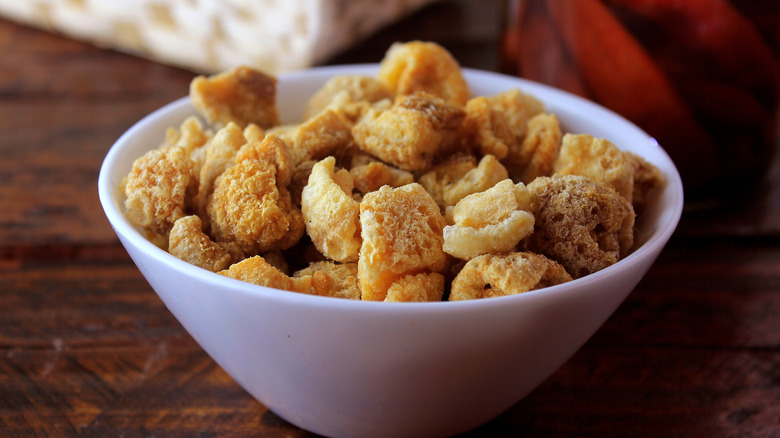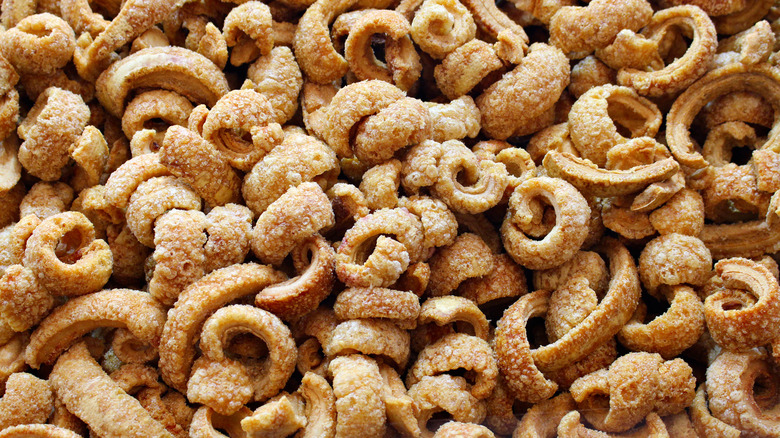Pork Rinds Are Better For You Than You Thought
Folks love pork. From pork chops to pork ribs to bacon (and everything in between), people have loved pork for quite some time. According to the United States Department of Agriculture, pork is the most eaten meat in the world with about 36% of the world consuming pork with their meals (chicken is the second most eaten, followed by beef, sheep, and goat). But despite it being such a popular meat, pork has gotten a bad rep for the most part.
Dr. Axe cites that a major issue with pork tends to be what they are fed, as well as what occurs in the body once its meat is consumed (things like diseases). But, like most meats, it oftentimes comes down to what cut of pork meat you're looking to consume as some are fattier than others, per Nutritionix. You might be surprised to learn that things like pork loin, pork sirloin roast, and especially pork rinds (eaten in moderation, of course) are actually better for you than you might think (via Prairie Fresh and Men's Health).
Pork rinds are a great puffy snack that's low in carbs and high in protein
According to Men's Health, most folks believe pork rinds to be bad for them because they are a fried food (and they aren't wrong on the frying part as it is a step within the pork rind-making process). Despite their fried nature, a one-ounce serving of pork rinds will provide you with up to 17 grams of protein and only nine grams of fat (Men's Health notes that is a ton more protein than you'll ever find in a bag of chips). Another thing that is working in the favor of pork rinds is that all the fat that is found in it is unsaturated fat, specifically oleic acid. What is oleic acid, you ask?
Drop An F Bomb explains how oleic acid is a healthy monounsaturated omega-9 fatty acid that is found in things like olive oil and avocado oil. The blog post details how foods that carry oleic acid work well with folks following the Mediterranean, ketogenic, and paleo diets. It also supports things like brain function and heart health. But, like many things, pork rinds should be eaten in moderation as they are high in sodium. Healthline notes that while a two-ounce serving will have about 35 grams of protein, zero carbs, and 18 grams of fat, the overall sodium count is a cool 1,040 milligrams.

